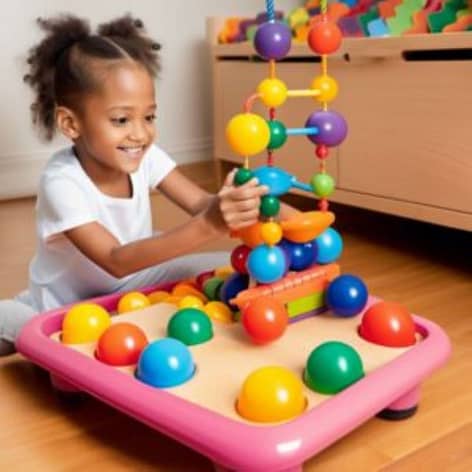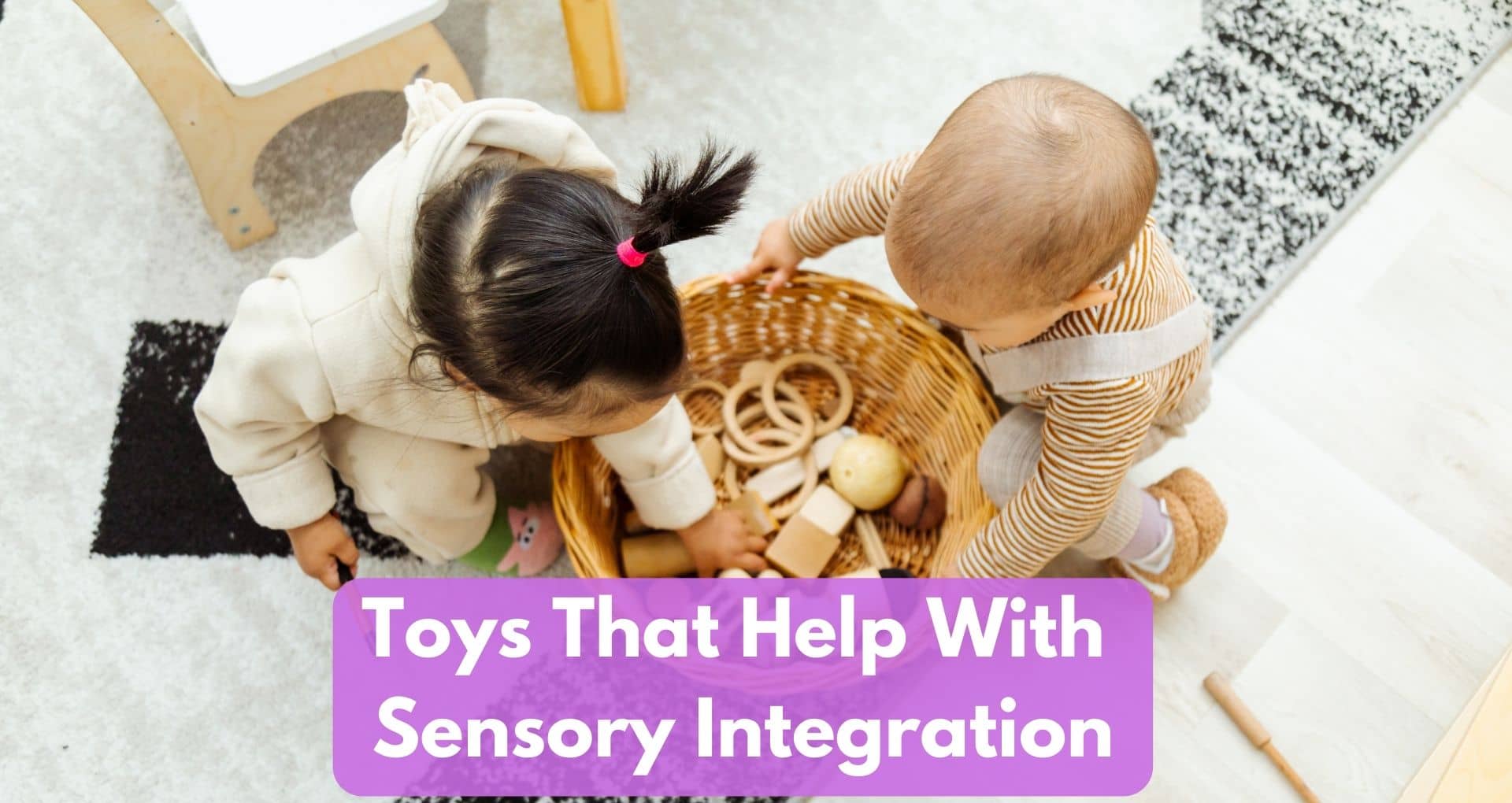You’re curious about whether there are any toys available that can assist with sensory integration. Sensory integration refers to the brain’s ability to process and interpret the information received through the five senses. It plays a crucial role in a child’s development and learning.
In this article, we will explore different types of toys that can effectively promote sensory integration, stimulating the senses and aiding in the development of crucial skills. Whether you’re a parent or a caregiver, understanding the potential benefits of sensory toys can be invaluable in creating an engaging and supportive environment for children.
Benefits of Sensory Integration Toys
Improvement in Sensory Processing Skills
Sensory integration toys are a valuable tool for improving sensory processing skills. They provide a variety of sensory inputs, such as tactile, visual, auditory, vestibular, proprioceptive, and oral motor sensations. By engaging with these toys, individuals can become more familiar with different sensory inputs and learn to process them more effectively. This can lead to improved sensory integration and a better ability to respond adaptively to sensory information from the environment.
Enhanced Motor Skills Development
Engaging with sensory integration toys can also support the development of motor skills. Many of these toys require active manipulation or movement, which can help strengthen and refine motor skills. For example, playing with sensory balls can improve hand-eye coordination and fine motor skills, while using balance boards can enhance core strength and stability. By regularly using sensory integration toys, individuals can experience improvements in their motor skills over time.
Promotion of Emotional Regulation
Sensory integration toys have the potential to promote emotional regulation by providing a calming and soothing experience. Many of these toys offer sensory inputs that have a calming effect on the nervous system. For instance, weighted blankets can provide deep pressure input, which can help individuals feel grounded and regulated. By incorporating these toys into therapy sessions or daily routines, individuals can learn effective strategies for self-soothing and managing emotional states.
Development of Cognitive Skills
Engaging with sensory integration toys can also support the development of cognitive skills. These toys often require problem-solving, decision-making, and critical thinking, which can enhance cognitive abilities. For example, using sensory brushes to explore different textures can stimulate curiosity and encourage exploration. By regularly engaging with these toys, individuals can enhance their cognitive skills, such as attention, memory, and executive functioning.
Types of Sensory Integration Toys

Source: TheTechBrain AI
There are various types of sensory integration toys available, each specifically designed to target different sensory inputs. Understanding the different types can help you choose the most appropriate toys for your needs or the needs of someone you are supporting. Here are the main types of sensory integration toys:
Tactile Toys
Tactile toys are designed to provide different textures and tactile sensations. These toys can include textured balls, squishy toys, and sensory bins filled with materials like sand or rice. They help stimulate the sense of touch and can be particularly beneficial for individuals who have tactile sensitivities or seek tactile input.
Visual Toys
Visual toys are designed to engage the sense of sight. They often incorporate bright colors, movement, or visual patterns to capture attention and promote visual tracking. Examples of visual toys can include light-up toys, bubble tubes, or toys with moving parts. These toys can be helpful for individuals who have visual processing difficulties or who benefit from visual stimulation.
Auditory Toys
Auditory toys are designed to engage the sense of hearing. They can produce various sounds or require active listening. Examples of auditory toys may include musical instruments, sound puzzles, or noise-canceling headphones. These toys can assist individuals with auditory processing difficulties or those who benefit from auditory stimulation.
Vestibular Toys
Vestibular toys often involve activities that require controlled movements or provide different types of vestibular input. Examples of vestibular toys can include swings, balance boards, or rocking toys. These toys can be particularly helpful for individuals who have vestibular processing difficulties or those who benefit from vestibular stimulation.
Proprioceptive Toys
They are designed to engage the sense of body awareness and muscle control. These toys often involve activities that require pushing, pulling, or squeezing to provide deep pressure input. Examples of proprioceptive toys can include resistance bands, therapy putty, or weighted toys. These toys can be beneficial for individuals who have proprioceptive processing difficulties or those who benefit from increased body awareness.
Oral Motor Toys
Oral motor toys are designed to stimulate the muscles of the mouth and jaw. They can provide sensory input and help develop oral motor skills. Examples of oral motor toys can include chewable jewelry, vibrating toothbrushes, or oral sensory brushes. These toys can be beneficial for individuals who have oral motor difficulties or those who benefit from oral sensory stimulation.
Also Check: What Are Some Creative Storage Solutions For Baby Toys?
Factors to Consider When Choosing Sensory Integration Toys
When choosing sensory integration toys, there are several factors to consider to ensure they are suitable and effective. These factors include age appropriateness, safety and durability, variety of textures and sensations, ability to modify sensory input, and engagement and interactivity.
Age Appropriateness
When selecting sensory integration toys, it is important to consider the age and developmental stage of the individual who will be using them. Some toys may be more suitable for younger children, while others may be more appropriate for adolescents or adults. Choosing toys that align with the individual’s age can help ensure they are both safe and engaging.
Safety and Durability
Safety should always be a top priority when selecting sensory integration toy. It is also important to choose toy that are durable and able to withstand regular use, especially for individuals who may engage in more vigorous play or sensory-seeking behaviors.
Variety of Textures and Sensations
To provide a comprehensive sensory experience, it is beneficial to choose toy that offer a variety of textures and sensations. This may include toys with different tactile surfaces, toys that produce various sounds, or toys that provide different types of movement or pressure. Having a range of sensory inputs can help cater to the individual’s specific sensory needs and preferences.
Ability to Modify Sensory Input
Flexibility is important when selecting sensory integration toys. It is helpful to choose toys that allow for modifications to the intensity or type of sensory input provided. For example, some toys may have adjustable vibration settings or removable parts that can alter the level of sensory stimulation. This allows for customization to meet the individual’s specific sensory requirements.
Engagement and Interactivity
To ensure maximum benefit and enjoyment, it is important to select sensory integration toys that are engaging and interactive. Look for toys that encourage exploration, problem-solving, or social interaction. Toys that capture attention and maintain interest can help promote sustained engagement and active participation.
Examples of Sensory Integration Toys
There are many sensory integration toy available on the market that cater to different sensory needs. Here are a few examples of popular sensory integration toys:
Fidget Spinners
Fidget spinners are handheld toy that consist of a central bearing and three or more spokes that rotate around it. They can provide a calming sensory experience and help individuals focus or decrease anxiety.
Sensory Balls
Sensory balls are lightweight, textured balls that come in various sizes and textures. They can be squeezed, rolled, or thrown, providing tactile and proprioceptive input. Sensory balls are beneficial for hand-eye coordination, fine motor skills, and sensory exploration.
Weighted Blankets
Deep pressure input, promoting relaxation and a sense of security. Weighted blankets are often used to aid in improving sleep quality and reducing anxiety.
Sensory Brushes
Sensory brushes are brushes with soft bristles that individuals can use to provide tactile input to the skin. People often use them if they have tactile sensitivities or if they seek tactile stimulation.
Balance Boards
Balance boards are wooden or plastic boards that provide a dynamic surface for balancing and weight-shifting. They help enhance balance, coordination, and core strength. Additionally, balance boards are beneficial for developing vestibular and proprioceptive skills.
Chewable Jewelry
Chewable jewelry consists of necklaces or bracelets that are safe for chewing. They provide oral sensory input and can help redirect oral sensory seeking behaviors. Chewable jewelry is often used as an alternative for biting nails, clothes, or other non-food items.
How to Incorporate Sensory Integration Toys into Therapy
Sensory integration toys can be effectively incorporated into therapy sessions to support individuals in achieving their therapy goals. Here are a few ways to integrate sensory integration toy into therapy:
Individual Therapy Sessions
In individual therapy sessions, sensory integration toy can be used to address specific sensory needs and goals. The therapist can tailor the selection of toys to the individual’s preferences and sensory challenges. There are various therapy activities where you can incorporate the toys, such as sensory play, fine motor exercises, or relaxation exercises.
Group Therapy Sessions
In group therapy sessions, sensory integration toys can be used to promote social interaction and collaboration. The therapist can choose toys that encourage turn-taking, sharing, or cooperative play. Group therapy sessions with sensory integration toys can help develop social skills, communication skills, and sensory regulation in a supportive and engaging environment.
Home-Based Activities
Sensory integration toy can also be incorporated into home-based activities to support sensory development outside of therapy sessions. Parents or caregivers can engage in play-based activities using these toy to reinforce therapy goals and provide additional sensory stimulation. This can help extend the benefits of therapy into everyday life and promote ongoing progress.
Conclusion
Sensory integration toy offer numerous benefits for individuals with sensory processing difficulties. They can help improve sensory processing skills, enhance motor skills development, promote emotional regulation, and aid in the development of cognitive skills. By understanding the different types of sensory integration toys, considering important factors when choosing these toy, and incorporating them into therapy sessions, individuals can benefit from the therapeutic effects of this play. Whether in individual or group therapy sessions or during home-based activities, sensory integration toys can provide a fun and effective way to support sensory integration and overall well-being.
